Top 10 tips for winter touring
Although we might tend to associate touring with the summer months and warmer climes, with a bit of forward planning there is no reason why it can’t continue into autumn and winter. Modern leisure vehicles contain exceptional insulation and heating systems, providing warmth and comfort in colder conditions. Here's my Top 10 tips for touring in the winter:
1. Preparation is Key: Plan your route by assessing road conditions and weather forecasts. Prior to departure, contact the campsite to confirm that they are open and ensure they’re unaffected by severe weather such as flooding or snow.
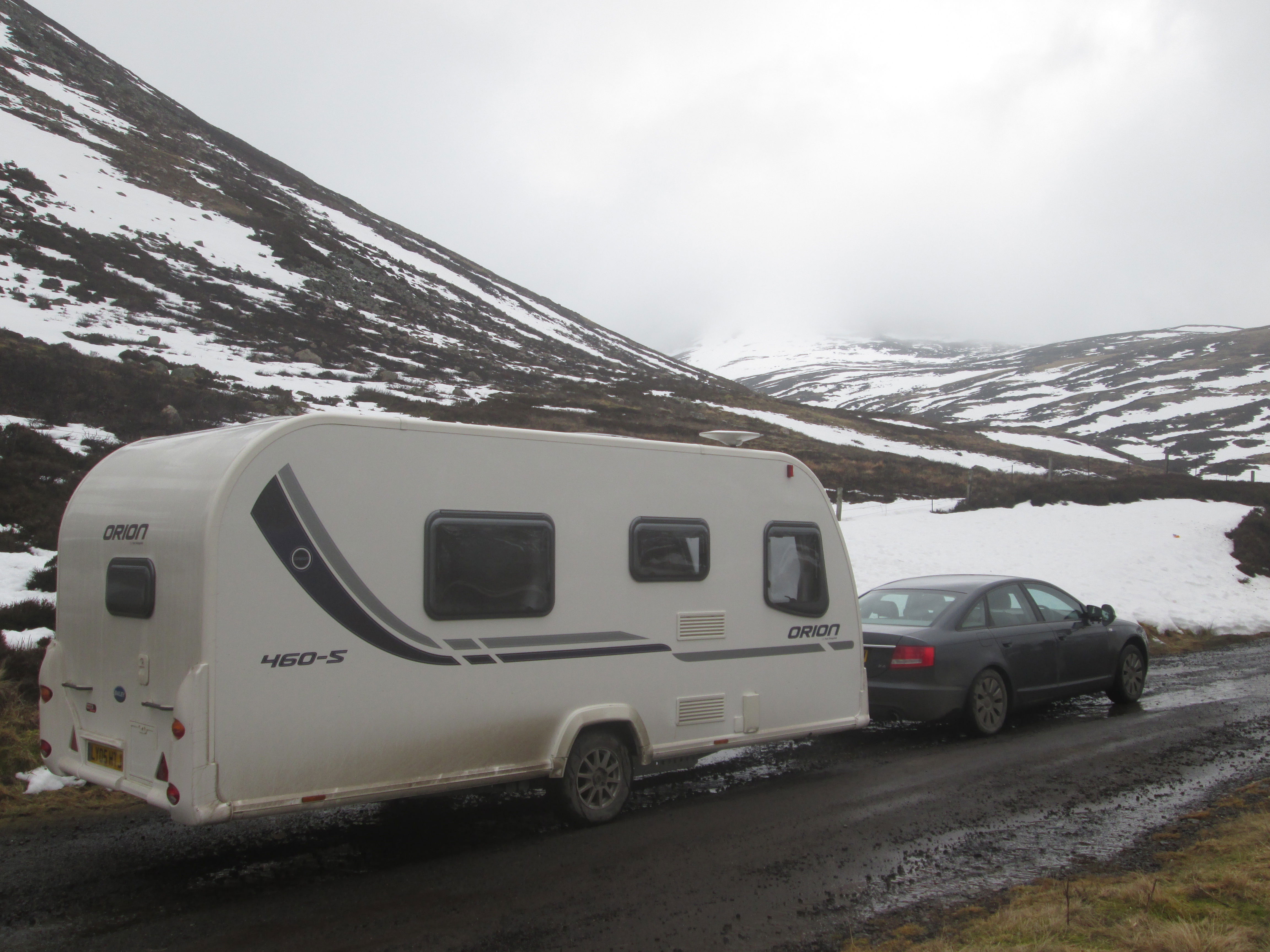
2. Packing List: Pack essentials like torches, grip tracks (in case you get stuck in mud!), plenty of warm clothes, storm straps and rock pegs for the awning, first aid kit and necessary documents like breakdown cover.
3. Awning: Setting up a porch awning is a speedy and straightforward process, offering protection from winds at the caravan entrance, a convenient spot to remove muddy boots, and an ideal area to hang wet clothes. It is advisable to brush heavy snow off the awning exterior to reduce pressure on the structure.
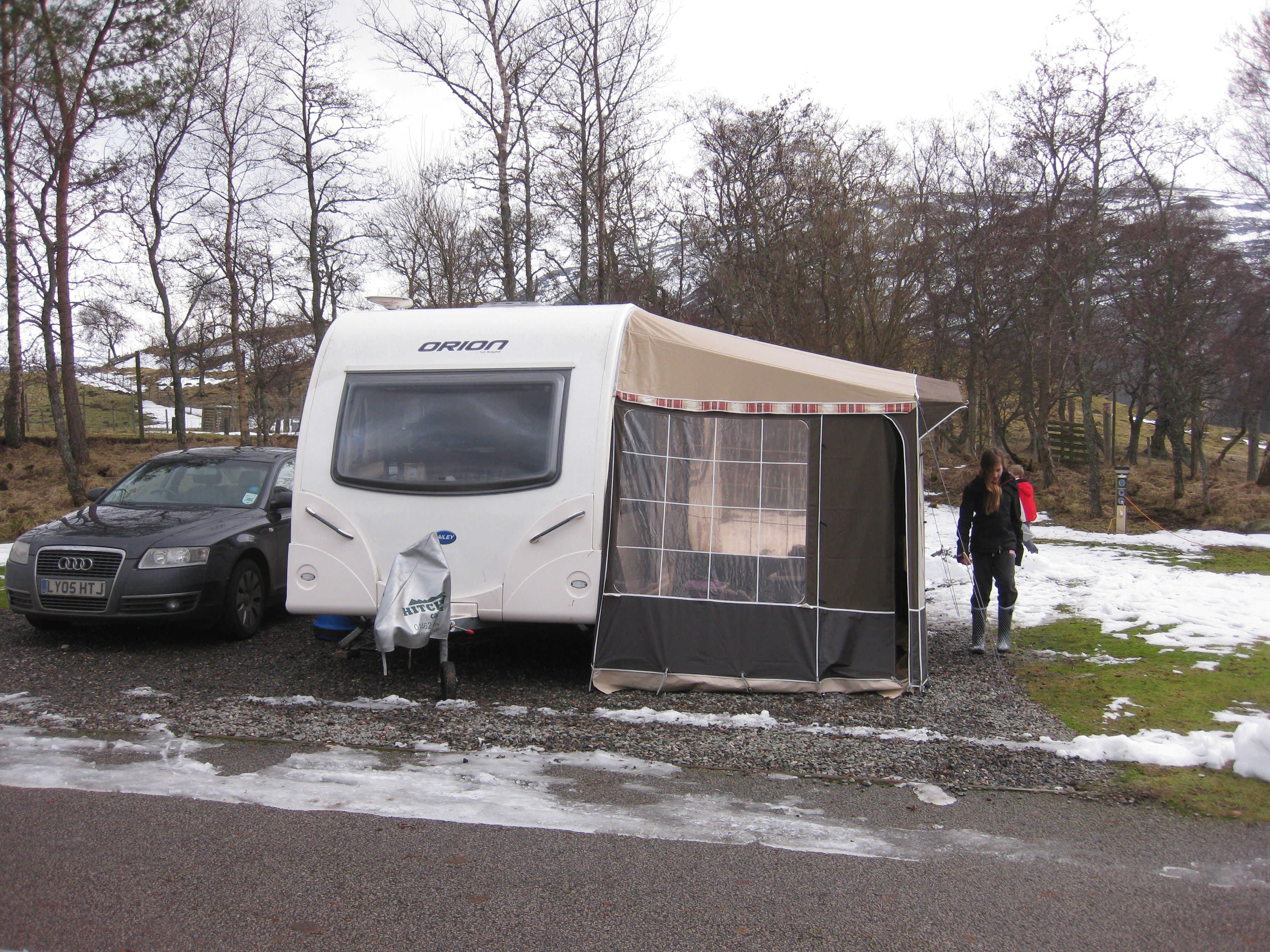
4. Vent Cover: In cold conditions, some items in fridges freeze solid. To prevent over-cooling install a cover on the exterior vent to modify the passage of air across an appliance’s rear-mounted cooling unit. These should be attached as per instructions when air temperatures fall below 10⁰C (50⁰F).

5. Water Container Cover: The simplest way to prevent fresh water containers from freezing is to bring the container indoors at night. Alternatively, cover it with old blankets or purchase an insulated bag from suppliers like Bags And Covers Direct or Bags2Cover for approximately £30. If you keep the fresh water container topped up, then it is less likely to freeze. With waste water containers, empty them regularly. The last thing you want to do is try and defrost your grey waste.
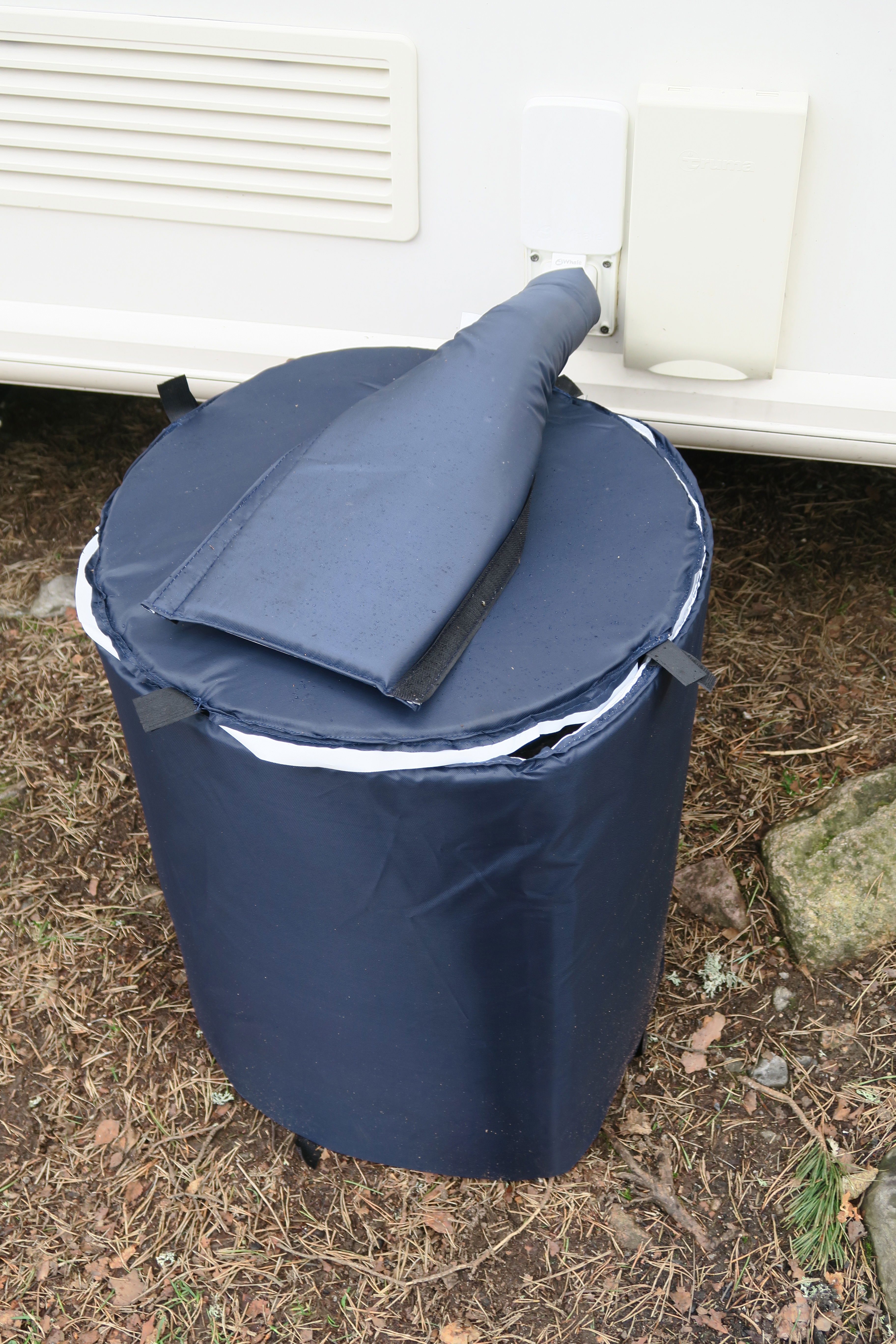
6. Gas: Stock up on propane gas (generally sold in red canisters). It is ideal for winter/cold weather touring as it changes from a liquefied state into gas in temperatures as low as -45⁰C. The ‘off-take’ rate of a propane cylinder allows more gas appliances to be run simultaneously than a butane cylinder. Also, it is lighter than butane. Be aware that it is hard to find propane in portable cylinders in Europe.
7. Winter Tyres: While ‘winter tyres’ are not mandatory in the UK, they are recommended or compulsory in many European countries at certain times or when conditions require (you may also need to carry snow chains). If you are travelling abroad be sure to check the law in the countries you are visiting. If you are towing in heavy snow, fit snow chains to the driven wheels of the tow vehicle, but not to the caravan tyres.
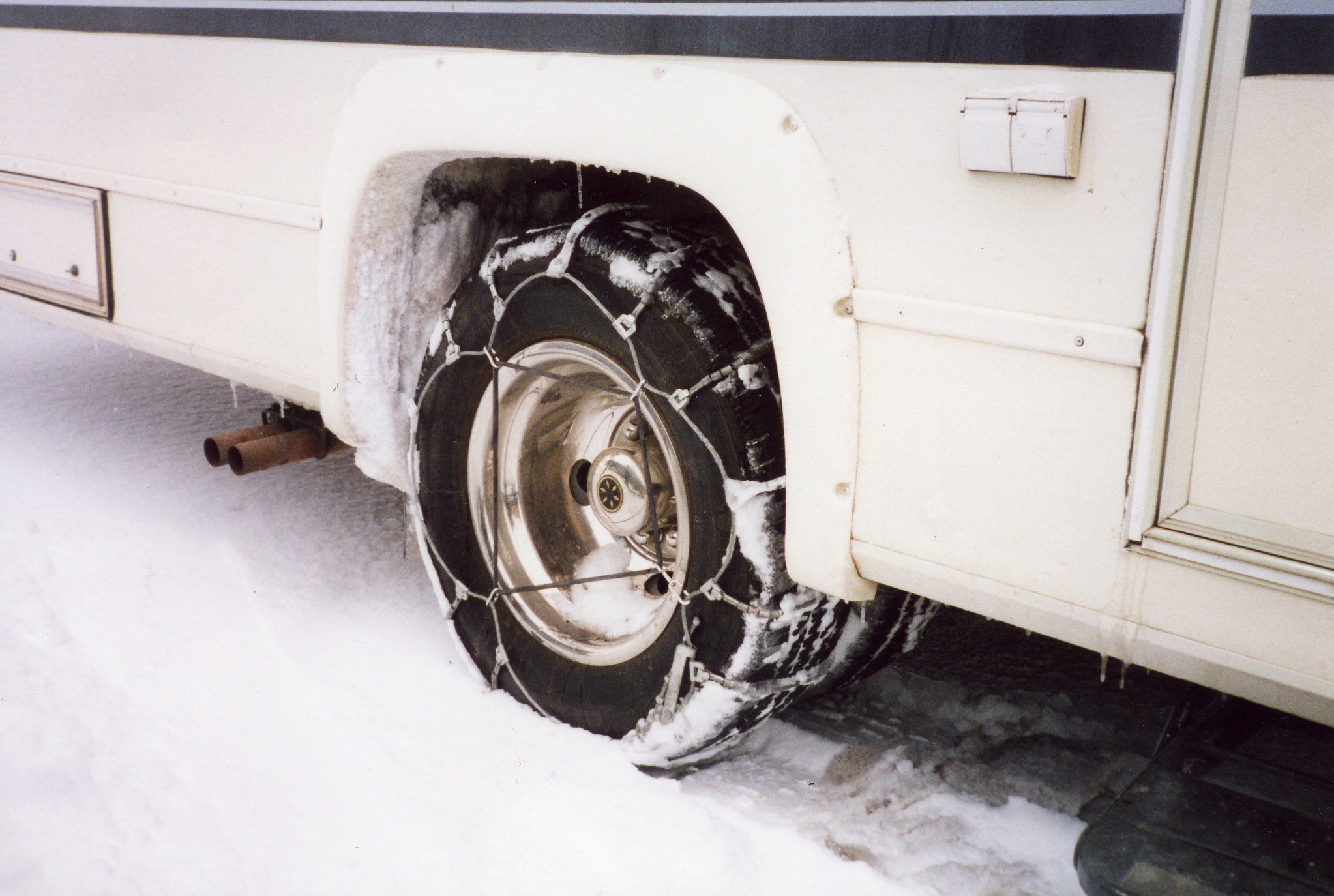
8. Motorhome Screen Covers: The cabs on motorhomes and campervans are single-glazed, so, when you’re pitched up it makes sense to fit a silver-coloured thermal screen cover in order to avoid losing precious heat. Internal screens are great for warmth, while external covers also help prevent frost build-up and condensation.
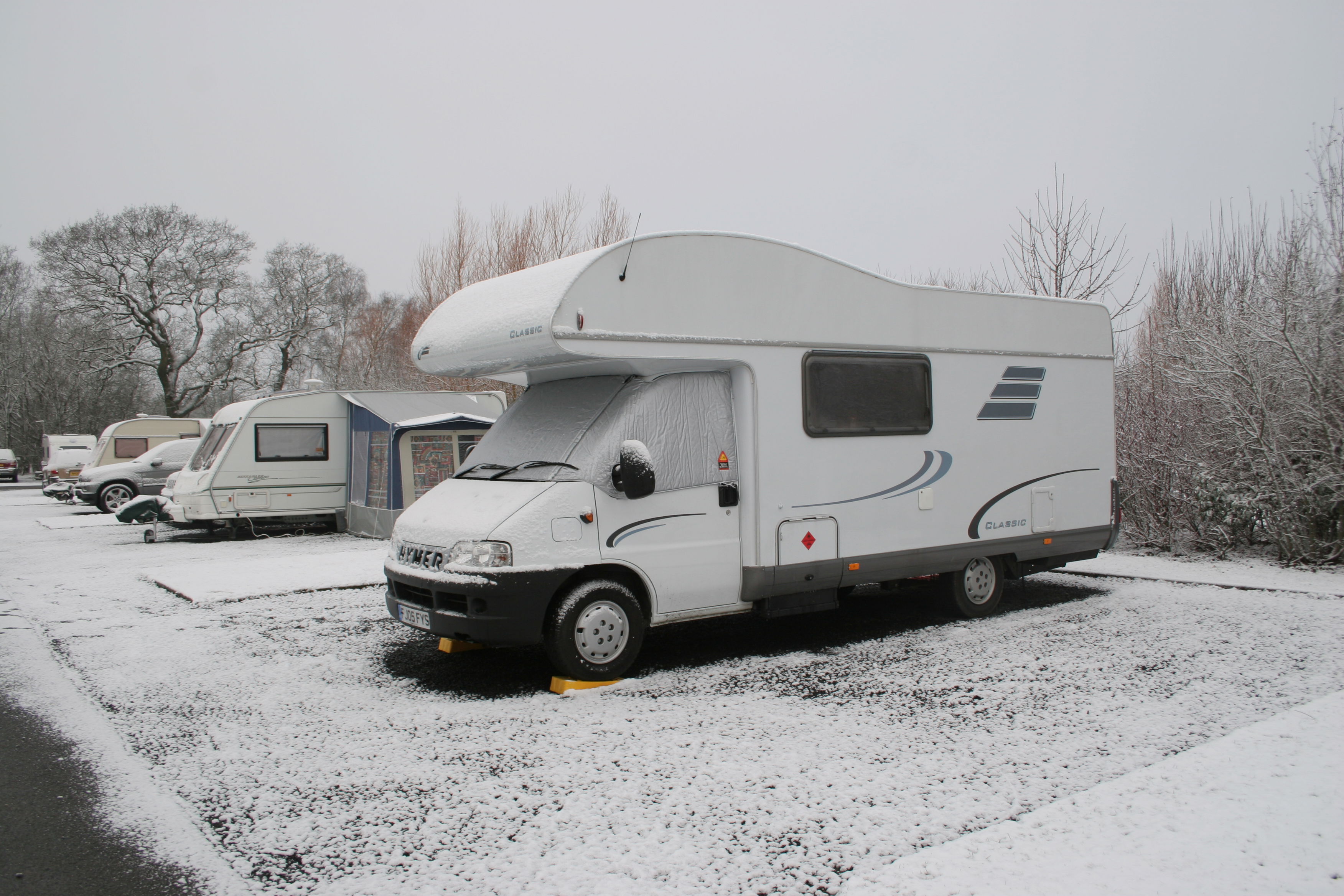
9. Campsite Selection: Choose campsites wisely, considering amenities, accessibility, and surroundings. It is recommended to book hardstanding pitches during particularly wet weather as heavy vehicles will sink in boggy grass.
10. Energy Management: The days are often shorter in the winter months and as the light fades, the temperature drops. The need for heat, light and for some TV viewing typically puts pressure on hook-ups. Just because a pitch occupier can draw up to 16 Amps on most UK sites, doesn’t mean that all pitches can provide that amount of power simultaneously. Be mindful of energy consumption. Some European sites only provide 6 amp hook-up. The last thing you want to do is to trip the hook-up and end up having to seek help in the early hours of the morning!